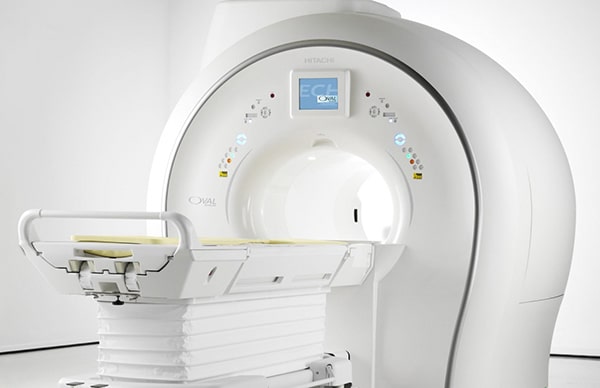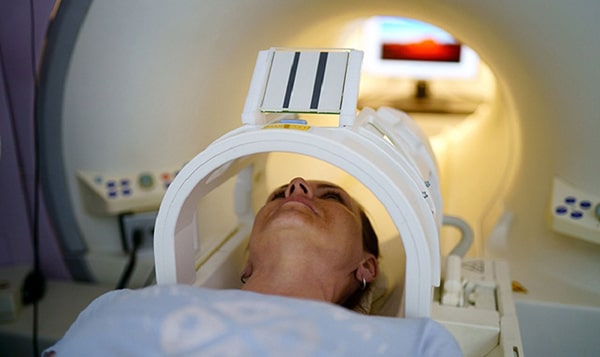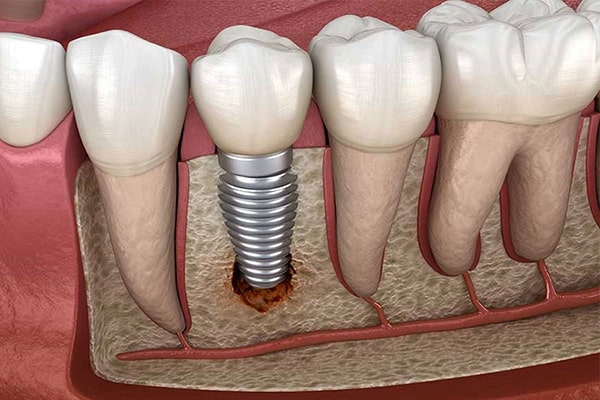Answer: Can I go for an MRI scan with a Dental Implant?
After Dental Implant, patients can still take MRI as usual, because the titanium material of the post as well as the Abutment has weak metal properties, so it does not cause magnetic disturbances and affect the results of the scan. However, if the porcelain crown on the Implant tooth is a metal porcelain tooth, you need to remove it before implementation. Therefore, whether the implant can be taken with an MRI is not really a cause for concern.
Contents
What is an MRI scan?
MRI, also known as magnetic resonance imaging, is a non-invasive imaging technique that uses magnetic fields and radio waves in disease detection, diagnosis, and treatment monitoring.
Magnetic resonance imaging film has high contrast, sharpness, detail, good anatomy and especially 3D reconstruction, bringing more accurate diagnosis to doctors. In many cases, the imaging effect of MRI is much better than ultrasound, CT scan, X-ray,…
In addition, the process of performing MRI does not use X-rays, so the safety level is very high.
MRI is used to capture many different parts of the body such as the skull, neck, chest, waist, entire spine, abdomen, blood vessels, joints, bones, etc.

Can I have an MRI if I have a Dental Implant?
One of the conditions for an MRI scan is that there is no metal object on the patient. However, although the implant is metal, it is titanium – a weak metal that magnetism is almost absent and is classified as paramagnetic. Therefore, for those who have had Dental Implants, they can still have normal MRI scans.
With weak metallic properties, the Implant post will not cause magnetic disturbances or be attracted by the magnetic field to affect the test results. Therefore, people who have Implant teeth are completely assured when taking MRI without having to worry about negative effects on their health and examination results.
In which case a patient with Dental Implant cannot go for an MRI?
In fact, there are still some cases where it is impossible to do magnetic resonance imaging after having implanted teeth.
Accordingly, the Implant tooth is made up of 3 parts: the Implant pillar, the Abutment joint and the porcelain crown above.
In particular, there are two parts made from titanium, the post and Abutment, which do not cause any effect on the MRI process. However, the above porcelain crowns are processed from many different materials but include two main types: metal porcelain crowns and all-ceramic crowns.
Thus, for those who use metal porcelain crowns when restoring Implant teeth, they will not be able to conduct MRI scans.
However, you do not need to worry too much because in such cases, the doctor usually appoints you to remove the metal-ceramic crown and then perform magnetic resonance imaging. Moreover, the process of removing the porcelain crown is not too complicated.

Why do you have to remove metal objects during an MRI procedure?
This is one of the mandatory requirements for everyone when performing magnetic resonance imaging.
The reason is because during the MRI scan, there will be many magnets to create a magnetic field, and the magnets will attract metal. So if there is metal on the person, when taking pictures, it will cause magnetic disturbances, resulting in inaccurate images.
On the other hand, metal objects implanted in the body can be moved due to strong magnetism, causing injury.
Therefore, removing metal objects before entering the MRI room is a must.
Note when taking MRI for people who have Implanted teeth
To ensure safety as well as diagnostic results, for those who have implanted teeth when performing an MRI scan, it is important to note a few important things as follows:
- First: Immediately inform the doctor about your condition, especially which kind of porcelain crown you use. For the use of metal-ceramic or low-titanium crowns, talk with your doctor from the beginning to remove before the MRI.
- Second: As a general rule, before the day of MRI, we can eat and drink as well as use prescription drugs as usual. However, in some special cases, the doctor may ask not to eat or drink anything for 4 hours before the procedure. So you need to consult your doctor as well as remember and listen to the doctor’s instructions carefully.
- Third: To avoid blurred, out-of-focus films, during the process, try to keep the body part being examined still when taking the photo.
- Fourth: In case you need to use sedation, after taking the picture, you must have someone to take you home as well as stay by your side within 24 hours until the drug wears off completely.

Thus, for the question of whether people with Implant teeth can have an MRI, we have answered it very thoroughly. Hopefully, through the sharing in the article, it has helped you gain a lot of useful information as well as have the best preparation for yourself before having an MRI.
